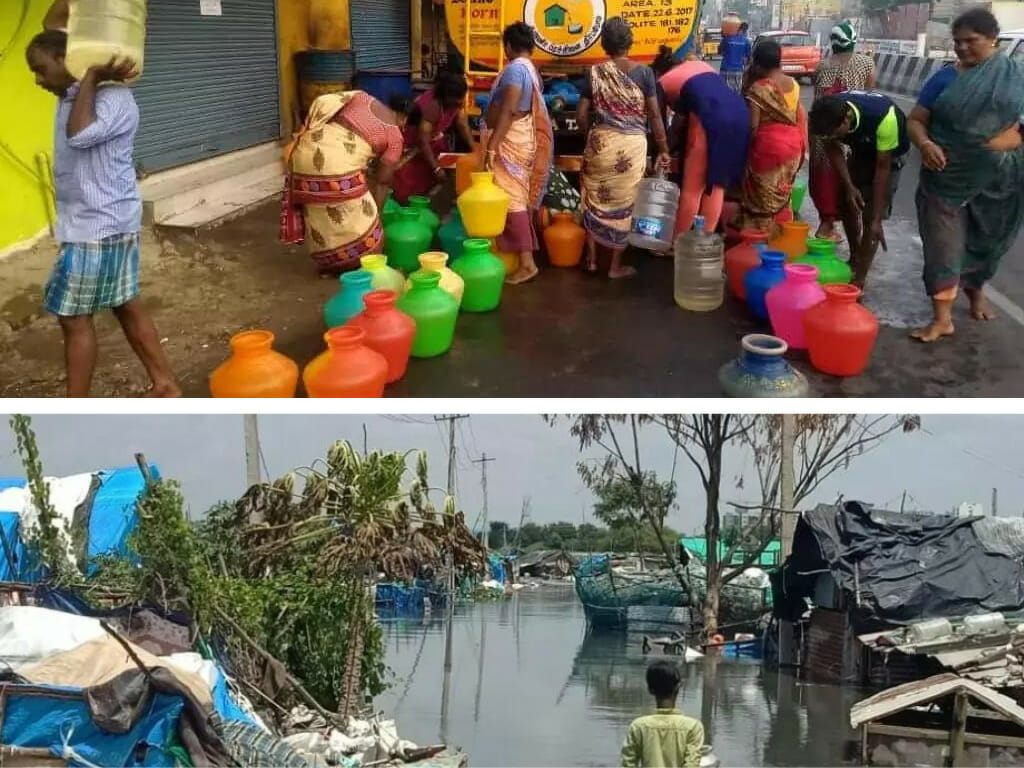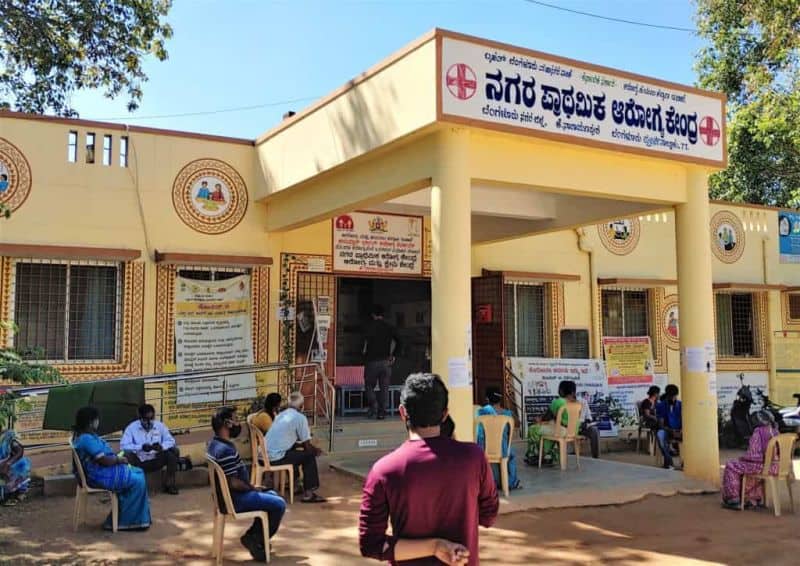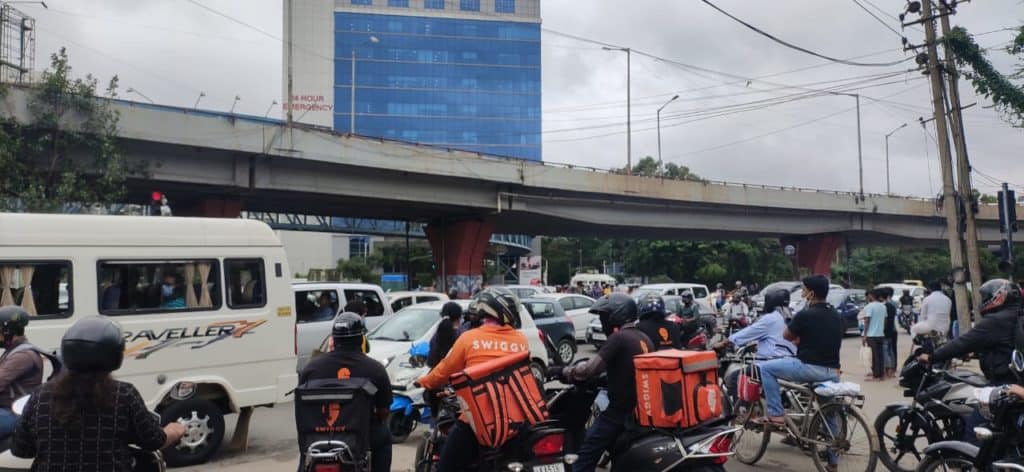The Merriam Webster dictionary’s definition of the word ‘manifesto’ is “A written statement declaring publicly the intentions, motives, or views of its issuer”.
Do the manifestos released by the four main political parties contesting the May 10th Karnataka assembly elections fit that definition? The intentions are somewhat spelt out, the motives are unknown. And its views on issues like decentralisation, of urban governance in particular, finds no mention at all.
The tradition of issuing “manifestos” began with the first election in 1952. But those were different and simpler times with one major party, which faced no worthwhile opposition. But today’s politics is a vastly different scenario, especially with the growth of regional and even local parties representing particular groups, each virtually promising the moon to its supporters.
The latest set of manifestos for Karnataka gives an insight into each party’s general policy framework, goals, programmes and welfare schemes, or freebies as they have come to be known. They are, however, not legally enforceable. Which is why while most parties publish their manifesto with great fanfare, none has yet been able to achieve 100% of their stated goals.
Here, we compare some of the key issues, projects and welfare schemes that the major political parties have promised for Namma Bengaluru.
Water

Once a water surplus city, today Bengaluru is struggling to provide adequate drinking water supply to its citizens, even as it battles flooding due to rains in recent years. Some of the areas affected by these are:
- BTM Layout constituency: While on one-side low-income areas such as Rajendra nagar are struggling with water supply, down the valley areas like Ejipura are prone to flooding.
- Mahadevapura: Much of the constituency remained largely dependent on tanker water for the past 15 years. With the Cauvery Stage V’s deadline of 2023, water pipelines are in place in many areas, yet water availability is limited to just 1-2 days a week. Plus the high cost of connection has meant few communities are signing up for piped water supply.
- K R Puram: In the deluge of 2022, several homes were submerged overnight in the informal settlement located in Tigalarpalya, adjacent to Brookefield’s BEML Layout.
- Mahalakshmi Layout: The constituency faces shortage of drinking water, flooding of low-lying areas and clogged drainage pipes. The constituency is burdened with crumbling infrastructure, such as small sewage pipes that tend to clog frequently.
| AAP | BJP | INC | JD(S) |
| – Lake restoration and increased water bodies – BWSSB water to all homes | Under Digital 4.0 – Smart Water for Bengaluru to optimise water usage, reduce waste, and improve sustainability of the existing water systems. We will use advanced technologies such as sensors, real-time data analytics, and automated control systems to monitor and manage the city’s water supply. Mission Reclaiming Rajakaluve – Create an integrated storm water drainage system, including connecting missing links, building new drainage systems and desilting of existing drains. – Connect the storm water drainage system network with appropriate waterbody outlets. – Remove encroachment over drains and create pedestrian pathways. | Irrigation – Jeevajala: – An overall estimate of Rs 1.5 lakh crores in the next 5 years, which includes the Mekedatu project to be implemented at Rs 9,000 crores. – To provide 100% effluent treatment for reuse of water for non-drinking purposes To extend the Cauvery water supply to cover all parts of the city. – To identify, revive and expand traditional waterways and storm water drains. – New policy on Bengaluru river beds, Lake catchment areas. – Mission mode programme to cleanse and rejuvenate lakes of Bengaluru and prepare blueprint for water sports in the next 5 years and to – Constitute Lake Development Authority for BBMP. – River Vrishabhavathi rejuvenation. | Only JDS has an entire section dedicated to water – Jaladhare, which mainly focuses on irrigation and drinking water supply including the controversial Mekedatu reservoir project, which is touted to help water starved Bengaluru. The project is supposed to build a dam with a capacity to store 67 tmc water and generate over 400 MW of electricity. The projected cost stands at Rs 13,000 crores. |
Read more: 10 guarantees in Aam Aadmi Party’s Karnataka manifesto
Both JDS and INC have included the Mekedatu reservoir project as a panacea for Bengaluru’s water woes. Lake development is a prominent feature in most party manifestos. However, issues such as effluents, poor waste management contaminating the lakes leading to fish kill in Ulsoor, Basavanapura, Muthanallur and Bhattarahalli lakes needs to be tackled on priority. An insufficient and inefficient sewerage network often results in untreated water entering lakes in the city. The Kommaghatta Lake in Kengeri ward and Kannali Lake in the Nadaprabhu Kempegowda Layout are heavily polluted with sewage and solid waste
While Rs 500 crores was claimed to have been spent on developing 47 lakes under the Nava/ Amrutha Nagarothana, the BBMP could not confirm this.
The definition of “Development of lake” should be clearly mentioned to avoid litigation and public outcry as in the case of Mallathahalli Lake.
Effluent treatment is mentioned in the manifestos of INC and BJP. Bengaluru generates 1440 MLD (million litres per day) of sewage every year, which is approximately 30% of the entire state’s sewage generation, which are partly treated at the 33 sewage treatment plants managed by BWSSB. But a study found that the quality of treated water was not being monitored at a large number of these plants.
Healthcare

While Bengaluru was touted to become one of the most sought healthcare destinations in India, when it comes to its public infrastructure for health vulnerability and care, it leaves a lot to be desired.
Here are some the policies/schemes which the parties have promised to fix this gap.
| AAP | BJP | INC | JD(S) |
| Tablet to surgery, all free for the urban poor – Delhi model Mohalla Clinic in every locality and panchayat for primary care – 10 Delhi model Polyclinic in each assembly constituency for multi speciality consultation – Delhi model super Specialty hospital in every assembly constituency for major procedures and surgeries. | – Strengthen healthcare infrastructure in the state through Mission Swasthya by establishing one Namma Clinic, equipped with diagnostic facilities, in every ward. – A free annual master health check-up for senior citizens. | – To fill up vacancies of staff and doctors in all Government hospitals. – Extend Rashtriya Swasthya Bhima Yojna and bring all the health services under one umbrella and extend it to gig workers. – Establish government sponsored rehabilitation centres for drug addicts. – Increase the health expenditure to % of the GDP, in accordance with the National Health Policy. – Reorganise PHCs according to population. – Puneeth Rajkumar Heart Health Scheme to offer subsidy to Doctor/Clinics/Nursing home to buy Defibrillator (AED). – Promise to construct a sufficient number of old age homes, both day care and residential and child care centres. | – Fixing the issue of wage disparity of doctors under Rashtriya Bal Swasthya Karyakram (RBSK) and National Health Scheme. – Up to Rs 25 lakhs to be released from Chief Minister’s Relief Fund within 24 hours, towards expensive treatments, such as bone marrow treatment, heart, lungs and liver transplantation. |
Read more: 16 promises in BJP Karnataka manifesto, including implementation of UCC and introduction of NRC
In the run up to the elections, a number of Namma Clinics were launched but the quality of health services, availability of staff and their capacity, medicines, equipment, diagnostic facilities available there are yet to be ascertained.
While there was a marginal increase in budget allocation towards health, 30% of even the poorest citizens were forced to seek private health care.
According to experts, mental illness is a ticking time bomb. According to a study by the National Institute of Mental Health and Neurosciences (NIMHANS), residents of paying guest (PG) accommodations in Bengaluru suffer from a high incidence of mental and substance use disorders. Mental health did not figure in any party’s manifesto.
Mobility

According to estimates based on voter data, the population of Bengaluru has touched 16 million, making it a mega metropolis, whose population is equivalent to that of Singapore, New Zealand and Ireland put together.
A city this big is riddled with crumbling mobility infrastructure and infamous traffic snarls. A NITI Ayog 2018 report estimates that Bengaluru city incurs an avoidable loss of Rs 47,743 crore every year due to road congestion. Here are the party manifestos promising better mobility:
| AAP | BJP | INC | JD(S) |
| – Pothole-free, well-designed roads to ensure smooth traffic and mobility – Make Bengaluru streets pedestrian- friendly – Focus on public transport – BMTC fleet will be doubled to 12,000 buses – Immediate implementation of Peripheral Ring Road – Cycle lane network around the city – Airport and railway terminus to serve South Bangalore – Hi-frequency suburban railway services | -Multi-Modal Transport Hub “Concorde Bangalore”, on the lines of WTC transport hub, New York, which will act as a single central node for all public and on-demand transport services. – Bengaluru Unified Transit Network, consists of: Integrated ticket-booking app called “MyBengaluru MyRoute”, which will work as a one-stop app for bookings across various modes of transport. – Universal Travel Card called “My City My Card”, which will facilitate travel across all modes of public transport in Bengaluru. – Comprehensive mobile application that integrates AI-driven solutions to tackle Bangalore’s traffic challenges in areas like Silk Board Junction, Hebbala, Gorgunte Palya, Mekhri Circle, Sarjapur and others. | – North South, South-east long elevated flyovers with necessary wings to ease traffic flow. – Complete all pending metro projects under Phase 2, 2A, 2B within one year. Phase 3 and 4 in the next 5 years. Extend Metro upto Tumkur, Vasanta Narasapura Industrial hub – Construction of tunnel roads in CBD area on a PPP model to decongest traffic – A system for seamless integration of Namma Metro, Suburban Rail projects and public transport systems. – Efficient management of traffic by adoption of TOT Drone, speed camera, and other modern technologies – Add 5000 new electric buses to BMTCs fleet – E-rickshaw to improve first/last mile connectivity – Provide free bus passes to BBMP pourakarmikas – To complete ORR and PRR projects on priority basis. | – To reduce outstation vehicular movement in Bengaluru, roads around the city to be developed. – Widening of the NH 48 road into 4 way lane Makali to APMC 18 Kms at 450 Cr – Sondekoppa to Bidadi 40 kms at Rs 800 Cr |
Here are some expert suggestion to reduce Bengaluru’s infamous traffic quagmire:
Part 1: Need parking fees, congestion tax to regulate private vehicles
Part 2: Fix public transport to reduce car, bike trips
Part 3: Better mobility design can encourage the use of public transport, cycling and walking
Public campaign #BMLTAbeku ensured the passing of the long pending Bengaluru Metropolitan Land Transport Authority (BMLTA) Bill. But this authority has not held even one meeting so far.
Most party’s manifestos are focused on large infrastructure projects, such as Outer Ring Road (ORR), Peripheral Ring Road (PRR) as a way to ease traffic congestion of Bengaluru.
A main take-away from the two datajams conducted by OpenCity, is the need to take a more holistic approach to transit planning, which requires multiple government organisations/corporations to coordinate with each other. The rail and buses need to complement each other to ensure maximum connectivity.
Two actions that can immediately impact the ease of commute are leveraging the existing rail network (suburban rail) and increased BMTC funding to procure more buses for efficient last-mile journeys (feeder buses).
While there is some cheer on the Namma Metro front, last mile connectivity is still a major deterrent. A study by a city-based think-tank Fields of View demonstrated that reducing bus fares makes sense, both economically and environmentally.
Also read:
- Govt claims 47 lakes developed and 17 underway, but this is not quite true
- Lake development: Politicians seek publicity, but leave the public clueless
- Two govts, three CMs: Some big hits, many misses for sustainable mobility in Bengaluru
- Advice for the next CM: For a better Bengaluru, ensure growth in rest of Karnataka